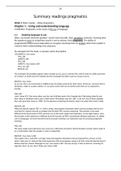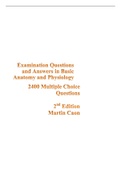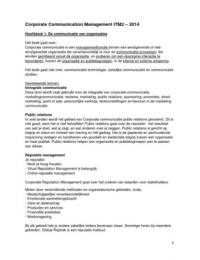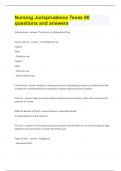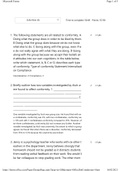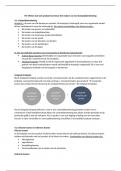Resume
Summary Pragmatics (LCX056B05), all readings
- Cours
- Établissement
A summary of all readings for Pragmatics: - Peter Grundy - Doing Pragmatics, chapter 1, 3, 7 - Gunter Senft - Understanding Pragmatics, chapter 1, 4 - Peter Auer - Context and Contextualization - Branca Telles Ribeiro & Susan M. Hoyle - Frame Analysis
[Montrer plus]
